Two-Steppin Tucson’s Musical Roots
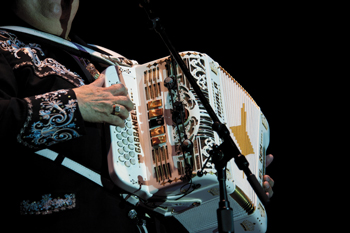 Tradition & Tejaño, Folk & Fest
Tradition & Tejaño, Folk & Fest
It’s the time of year when the charm and depth of Tucson’s musical diversity is most magically apparent. Clubs resonate with norteño accordions or fast picking fiddles. There are train whistles and steel drum, two-step rhythms of relaxed waila or frenetic cumbia, mariachi harmonies of violins and trumpets. Suffice to say that Tucson is home to one of the longest and most eclectic musical tables in the West.
Some say that Tucson’s multicultural party is tied to a larger trend of incorporating traditional themes and instrumentation in indie music. For example, there’s Beirut, who worked with The Jimenez Band for March of the Zapotec. And of course there’s Calexico, with its tejaño-norteño influences.
Perhaps Tucson is just part of this bigger picture. But so many believe that the way Tucson borrows on and interprets its multicultural roots for music is miles above the rest.
Traditionally Yours
Tucson is a huge small market with a self-perpetuating cultural music scene that takes pride in what it is, looking to its roots for inspiration and new sounds, says Susan Holden, whose husband was one of the fathers of Tucson cultural music. Jonathan Holden, who died earlier this year, helped start KXCI community radio in 1970s and later founded Rhythm & Roots Concert Series in the mid 1990s. Susan and a team of volunteers continue “music as medicine,” the Rhythm & Roots mission. “Jonathan would say that music was like an electrical current that moves seamlessly throughout the world,” she says. “What starts in the cultural bones of one place, like Tucson, adds its unique sounds to a global energy source that influences everything.”
Tucson’s unique musical current takes its charge from sources that are inspired by our borderland culture, founded in local Native American social music and spiced up by American West alternative country. What is so musically alluring is how this city just mixes it all up.
Pete Rodriquez, DJ and owner of Five Star Productions, sees how cultural music blends with Hip Hop and R&B as he travels around Southern Arizona for quinceañeras and other community events.
“You can see that a lot of the music from O’odham and Yaqui groups is influenced by sounds from Sonora and Texas,” says Rodriquez, who also is Yaqui. “For example, Selena tunes often are remade into Chicken Scratch by Tohono O’odham bands, or rancheras are remade into Yaqui language songs,” he notes.
Musical influences cross folklore and culture, melding international rhythm and instruments and modernizing sound with techno and pop. The bottom line is that everyone participates: kids to middle-aged or elder – it doesn’t matter. Tucson turns out to take in diversified music, with everyone dressed in their unique fabulousness to just have fun. DJ Rodiquez highlights cumbia as a popular style and tempo which always packs the dance floors. “Ask a band to play “Mi Yaquicita” and watch the dance floors rock,” he says.
Two-Step Salute
One regional social dance demonstrating a most widespread and diverse influence is waila. In this music also known as chicken scratch, Tohono O’odham traditions and people give life to an extraordinary range of local music.
Waila’s altered variant of polka crosses genres in melodies passed on from generation to generation since the 19th century. Waila-style two-step is rooted in the music of German immigrants who came to Tucson to help build railroad. It blends imported continental European polka with Spanish-influenced norteño and other border sounds. In the old-style waila, bands only used fiddles and stringed instruments. Accordions and saxophones were added mid-1900s. Contemporary bands now use more rocking amplified sound with electric guitar, bass and drums.
Rock the Root
Around town, stand-out bands are rocking the local scene with their culturally-inspired popular music. Rodriquez, who knows the trends as a mobile DJ, points to Gertie and the T.O. Boys as a popular waila band. Gertie has performed at Tucson Meet Yourself, the Tucson Festival of Books and around Tucson.
For tejaño lovers, there are other top performers who headline regularly at the local casinos and clubs like Blue Moon on South 4th. One, Los Gallegos, is a group of brothers who create borderland dance-floor energy. They have regularly have scheduled sets at the Desert Diamond Casino’s Monsoon Night Club. Their last studio album, titled “Viejas Canciones,” translates as “Old Songs,” (which is a tribute to the way many groups first learn their music, according to Rodriquez).
Los Hermanos Quatro of the Pascua Yaqui Tribe is prominent in the Arizona Yaqui community, he continues. Another band playing music together in South Tucson for almost 14 years is La Nueva Onda.
One more local favorite, according to Rhythm & Roots’ Holden, is Carnivaleros, a band “almost norteño in a white-guy kind of way,” she says. For about a decade this group has combined back-porch BBQ-style music with mariachi, polka, Tex-Mex as well as blues. Many of its songs spin stories of local folklore (like the song, “Black Cloud Over Oracle,” inspired by the 2010 sheriff-inspired uproar at the Glow Festival) and use traditional instrumentation like the kazoo and triangle.
Singing Sonora
Underneath all the local accents are themes related to the desert and the region’s environment. Guitarist Gabriel Ayala, the current Native American Awards “Artist of the Year” who’s also a member of the Yaqui Nation, knows that the desert and cultural roots help shape his compositions. Although he performs globally, Ayala lives and composes in Tucson, where song is an important expression in both Yaqui religious ceremony and social dance. Ayala often composes outside, say, in a monsoon, and allows his musical composition to come from the place where heart meets mind and nature. “When I compose I sing the melody first,” he explains. “The desert can inspire my work.”
Dr. Jim Griffith, Southern Arizona’s cultural curator and founder of Tucson Meet Yourself, says the musical identity in our region is a richly complex picture, much of being played out at parties, processions and ceremonies. From Dr. Griffith’s book, Southern Arizona Folk Arts: “What is really going on is a kind of ethnic service left over from the days when the communities were much smaller and self contained, and when entertainment, when it happened, was usually provided by friends, neighbors or family members.”
As musicians continue to use traditional elements that reaffirm a connection to roots, fans of local sounds have plenty to celebrate this fall. Leading the pack and pulling together the biggest and most unique assortment of all that’s ethnic is Tucson Meet Yourself, the free folk-life festival scheduled October 12-14.
 In addition, Tucsonans wanting to learn more about the history and the variety of waila styles should visit Himdag Ki:, the Tohono O’odham Nation’s Cultural Center and Museum located in Topawa, just south of Sells. The “Tohono Kaidalig: Tohono O’odham Piast Ñe’ñei” exhibit opens this month, featuring a rich selection of historical waila photos and multi-media. The exhibition is accompanied by a re-creation of old-time waila stage as well as instrument displays and recordings. There’s an opening reception on September 13 with traditional foods and live waila performances. The Cultural Center and Museum also will bring together local musicians in a waila series to be scheduled in conjunction with the exhibit, which will run for about six months.
In addition, Tucsonans wanting to learn more about the history and the variety of waila styles should visit Himdag Ki:, the Tohono O’odham Nation’s Cultural Center and Museum located in Topawa, just south of Sells. The “Tohono Kaidalig: Tohono O’odham Piast Ñe’ñei” exhibit opens this month, featuring a rich selection of historical waila photos and multi-media. The exhibition is accompanied by a re-creation of old-time waila stage as well as instrument displays and recordings. There’s an opening reception on September 13 with traditional foods and live waila performances. The Cultural Center and Museum also will bring together local musicians in a waila series to be scheduled in conjunction with the exhibit, which will run for about six months.
If all this isn’t enough, there are small clubs around town featuring performers rooted in the city’s abundant cultural diversity.
Tucson is still that collection of small communities which blends roots in many ways to create great music. In the end, it all means the same: Tucson’s traditions totally rock. Go out and enjoy them this season.
photo, top: Randy Miramontez / Shutterstock.com. photo, bottom: Gabriel Ayala, Native American Artist of the Year

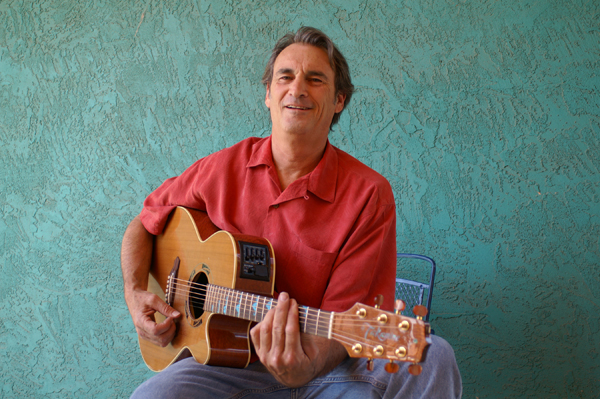
 Resistance is futile, the songs are too bewitching. The album, recorded at KXCI 91.3FM, consists of gorgeous notes adroitly composed and negotiated, sauntering from the enticing seduction of flamenco to jazz sensibilities. Tesoro calls it Flamenco Fusion. I dig that they fused in Tool’s “Forty-Six & 2” along with saluting Paco de Lucia, Chris Burton Jácome and Tito Puente.
Resistance is futile, the songs are too bewitching. The album, recorded at KXCI 91.3FM, consists of gorgeous notes adroitly composed and negotiated, sauntering from the enticing seduction of flamenco to jazz sensibilities. Tesoro calls it Flamenco Fusion. I dig that they fused in Tool’s “Forty-Six & 2” along with saluting Paco de Lucia, Chris Burton Jácome and Tito Puente. Science will not embrace visceral knowledge without evidence to back it. What humans, and our species’ ancestors, have innately known about the importance of music for hundreds of thousands of years is now being proven through modern science. Namely, that music and/or sound are fundamental aspects of individuals, societies, creatures on this planet, Earth, other planets and the universe as a whole.
Science will not embrace visceral knowledge without evidence to back it. What humans, and our species’ ancestors, have innately known about the importance of music for hundreds of thousands of years is now being proven through modern science. Namely, that music and/or sound are fundamental aspects of individuals, societies, creatures on this planet, Earth, other planets and the universe as a whole.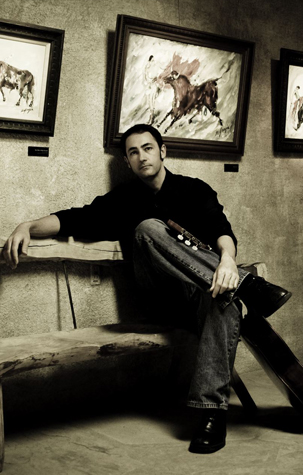
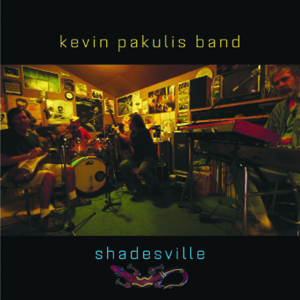
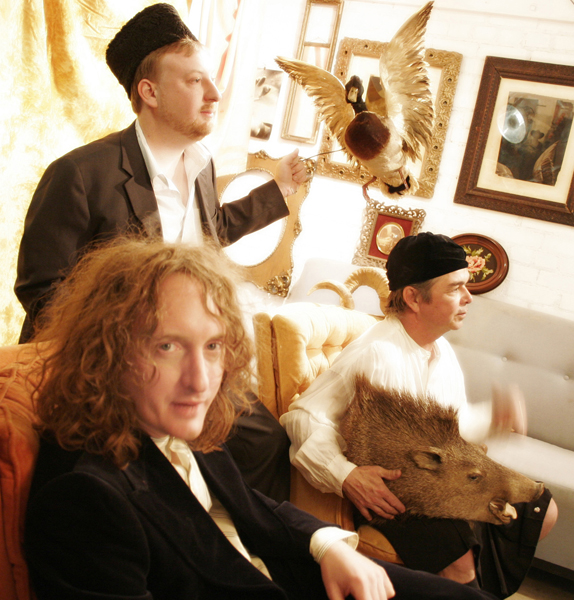
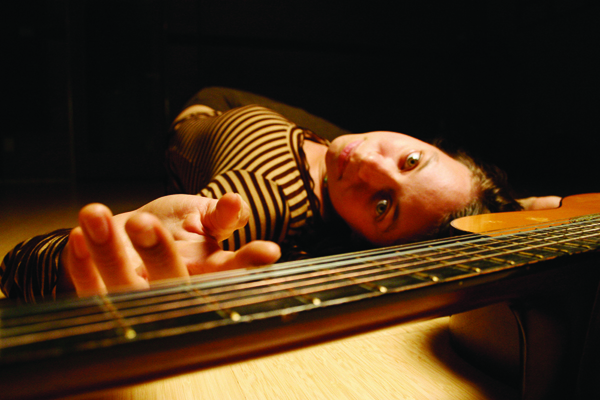
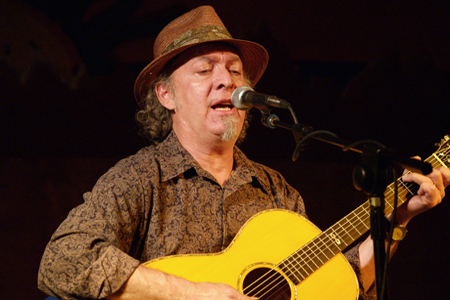




Also find us on...